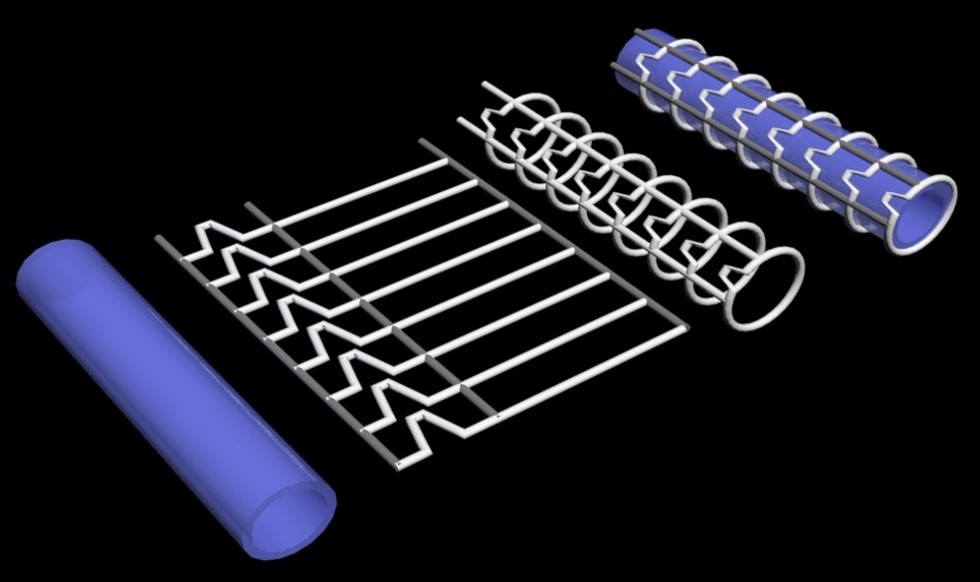A Biomemetic, More Flexible Prosthetic Artery
Opportunity
When cholesterol builds up in an artery, it can block blood flow to the heart, resulting in heart attacks or even death. This condition is known as coronary artery disease (CAD)-one of the world's most common chronic diseases, affecting roughly 126 million people. It is also a leading cause of death, having killed nine million in 2017 alone. Given the growing prevalence of CAD, continuing advances in its prevention and management are necessary.
Advanced CAD often requires bypass operations where a new artery called a graft is inserted-allowing blood to flow around the blockage. This graft is usually taken from a vein in the leg, however, some patients lack healthy veins that can be used. While prosthetics for larger arteries have effectively been used for decades, prosthetics for smaller ones (less than six millimetres) are prone to developing blockages due to mechanical mismatch between the prosthetic material and the adjoining arterial wall. The native artery has non-linear flexibility, that is not matched by any existing prosthetic for small blood vessels, and this has led to very low patency rates for the prosthetic.
In 2018, the market for vascular grafts was estimated to be worth US$2.01 billion, with an estimated compound annual growth rate of 6.4 percent. Beyond its evident health benefits, a product that could serve as a synthetic blood vessel for smaller arteries would fill an unoccupied niche in a large and growing market.
Technology
This invention relates to the fabrication of a prosthetic blood vessel scaffold suitable for grafting in smaller arteries. The scaffold is made up of two layers: a synthetic, elastic inner tube; and a rigid outer mesh with several coils made up of living cells. This outer layer is created through bio-printing, a process similar to 3D printing, which uses living cells instead of plastic or other synthetic materials.
Together, these layers mimic how a real artery flexes and stretches as blood flows through it. The construct is designed to match the mechanics of a real blood vessel, helping to prevent blockages from forming. In contrast, the rigid outer mesh provides support, similar to the outer layer of a real artery; this prevents aneurysms from forming for patients with high blood pressure. This combination mimics the non-linear mechanics of the native artery in that it expands reversibly at low blood pressures and resists further deformation at high blood pressures.
Laboratory tests have already shown that the scaffold could be superior to similar products on the market. Meanwhile, animal studies have also proven that it does not leak and is easy to use. Unlike similar products, the scaffold is flexible enough to be used even for smaller blood vessels. With further testing and development, this scaffold could be used by CAD patients worldwide who are unable to receive vein grafts.

The prosthetic blood vessel scaffold consists of an elastic inner tube (left) and a rigid outer mesh made of parallel coils (middle). The outer mesh wraps arounds the inner tube (right) to closely mimic the flexibility of real blood vessels.


